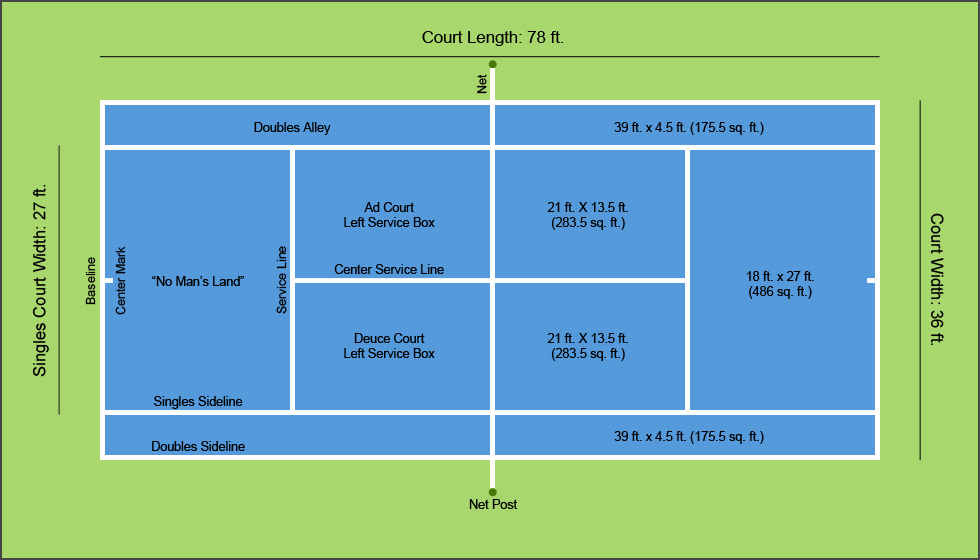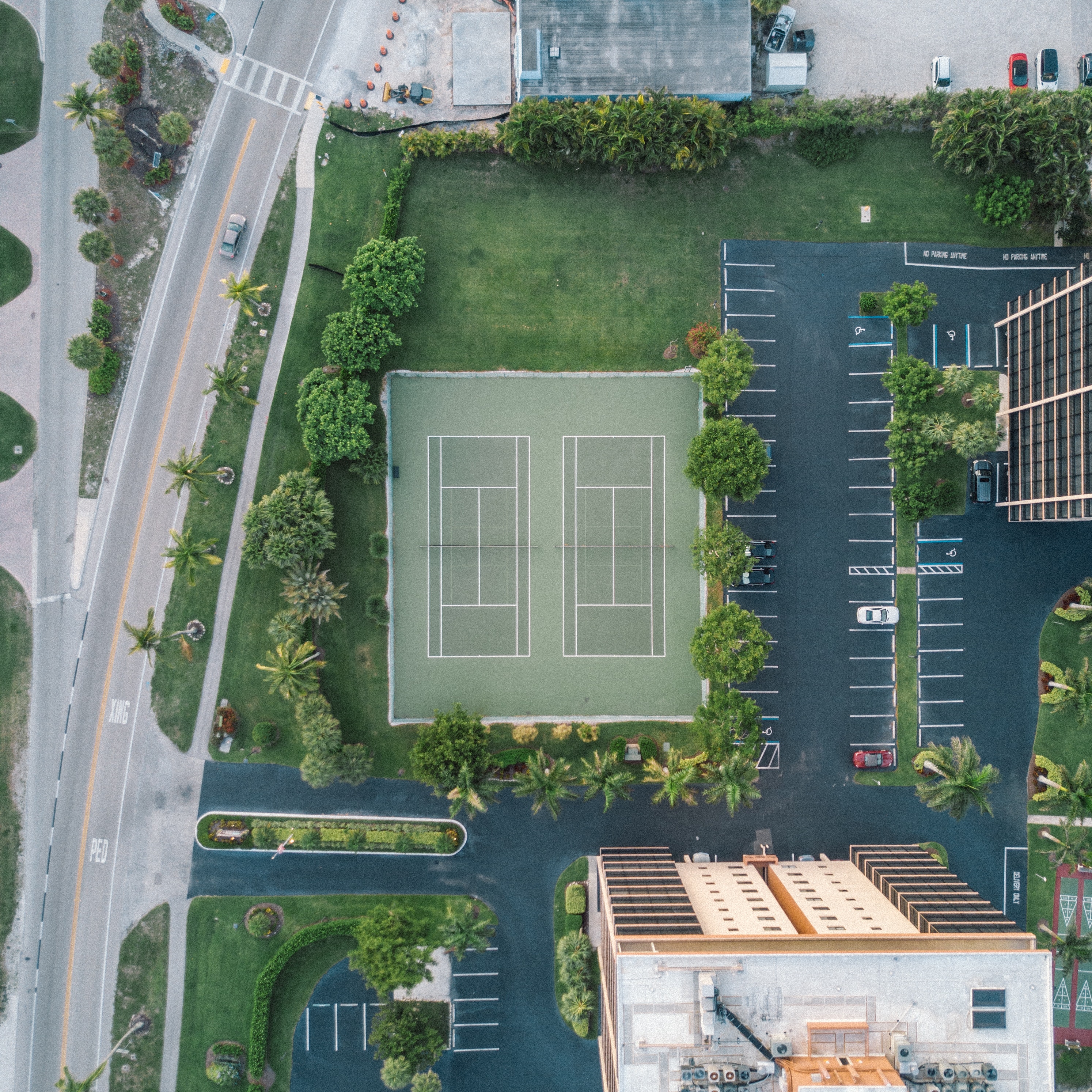
Tennis courts are different from what they used to be. Before the most recent form, the courts created by Wingfield were hourglass shaped, though they did have a similar layout to modern tennis' court. It is 78 feet long, 27 feet wide for singles and 36 feet wide for doubles. There is additional space around the court for balls that are out or overrun. A net is stretched across the middle of the court and is parallel with the baselines. It is 3 feet 6 inches high at the posts, and 3 feet high at the center. Tennis can be played on a variety of surfaces, including grass, clay, concrete, or asphalt topped with acrylic.

For singles matches, the game is played without the doubles alley, as there is no extra person to widen the court for. In doubles, however, the doubles alley is used. The lines that mark the width of the court are the baseline and the service line. The baseline is the farthest back line while the service line is the one down the middle towards the net. The service line is called as such because serves should land between the service line and the net on the opponents side. However, this is not where one stands when making a serve. The line dividing the service line in two is the center service line or center line. Depending on a player's position on the court, the player will have to land their serve in the box opposite to where they stand. The two lines on the farthest sides are the doubles sideline. The lines inside the court, before the doubles sideline is the singles sideline.